The Camino de Santiago in a Million Easy Steps
I just spent 34 days walking the Camino de Santiago, a medieval pilgrimage route that starts in France and runs 800 km across Spain to the tomb of St. James the Apostle in Santiago de Compostela. This UNESCO-recognized tradition began 1200 years ago and is now undertaken, at least in part, by around half a million people every year.
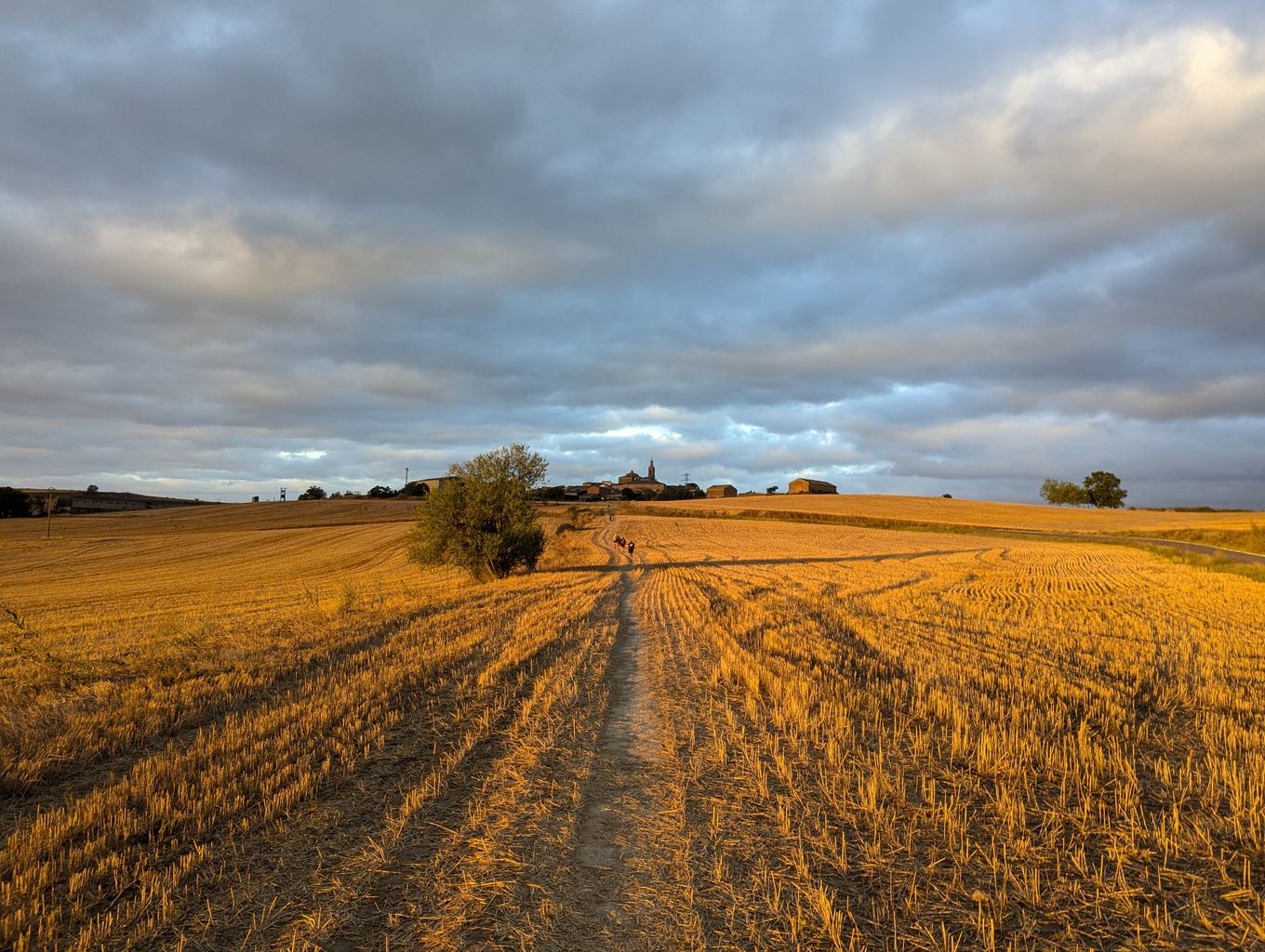
Jump to: Background · Tips · Language · Observations · Memories · Trivia · Gallery
Background
Fitness: I’m in decent shape for a 30-year-old, although I normally avoid cardio whenever possible. I can count on one hand the number of hikes I had done in life before the Camino, each of which lasted well under an hour.
Language: I studied Spanish for a couple years at an American high school and completed the Duolingo course in 2013 but never had much occasion to use Spanish in real life. A little knowledge went a long way while traveling through rural Spain, although I also met some pilgrims who seemed to get along fine speaking only English.
Route: I took the French Way (Camino francés), the most popular and historically important one of the many established Camino routes. After giving serious thought to the more scenic Northern Way (Camino del Norte), I chose the French Way for its cultural significance—the world offers plenty of options beyond the Camino if you’re mainly interested in natural beauty.
Religion: I’m quite familiar with Catholicism but not religious myself. According to the Pilgrim’s Reception Office, over half of all pilgrims make the trip for non-religious reasons.
Motivation: I had some free time and wanted to really disconnect from my regular life—especially work, tech, and American society1. A week before my sabbatical was scheduled to begin, I happened across this fateful Reddit comment that informed me of the Camino’s existence. My month in Spain ended up being the longest time I’ve spent away from a computer keyboard since I was 2 years old!
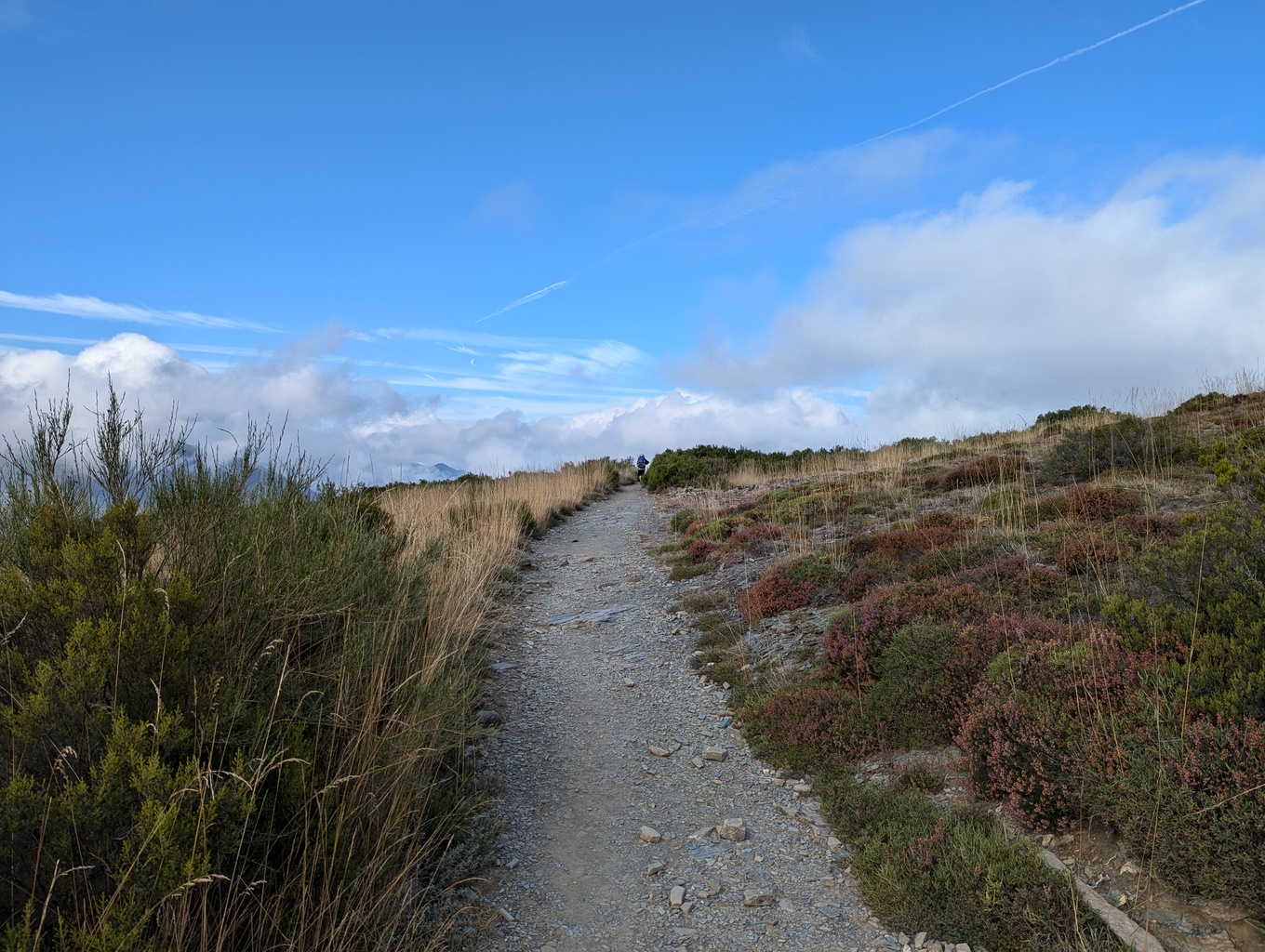
Tips
The standard instructions for how to do the Camino are to just follow the painted yellow arrows and collect stamps, but there’s a lot more worth knowing before you begin.
Plan travel to your start point. The French border town of Saint-Jean-Pied-de-Port serves as the classic starting point since historically most foreign pilgrims entered Spain through it. I flew into Biarritz Airport, took a bus to Bayonne, and finally took a train to St. Jean. It’s all clearly laid out in Google Maps.
Prepare your money. Use a credit card with no international fees wherever possible, and select “pay in EUR” (as opposed to USD) for better exchange rates. Waiters will always bring you a handheld card reader instead of taking your card—that’s an American thing. For cash, I used a Schwab debit card to avoid all ATM fees2. Tipping isn’t expected, but it’s common to round up to the nearest euro when paying in cash. Waiters will generally leave you alone, so you’ll need to flag them down once you’re done eating.
Beat the heat. I’m a person who runs hot and hates feeling sweaty, so August was an unfortunate choice of starting month. I made up for it by going all out on sun protection: I wore hiking pants and long-sleeved sun hoodies every day, I chose a lightweight backpack with good ventilation, I attached a UV hiking umbrella to it, and I timed each day’s walk to end before the outdoor temperature reached 20 °C—even if that meant strapping on a headlamp and starting at 5am3, hours before sunrise.
Know mass etiquette. Non-Catholics and even non-Christians are still welcome to attend church services. The pilgrim mass in Santiago is especially popular. Just bring €10 or so for donation, don’t go in shirtless or barefooted, follow what everyone else is doing, and most importantly: do not accept communion (bread and wine) from the priest. You can either stay seated or cross your arms in an X over your chest to receive a blessing from the priest instead4.
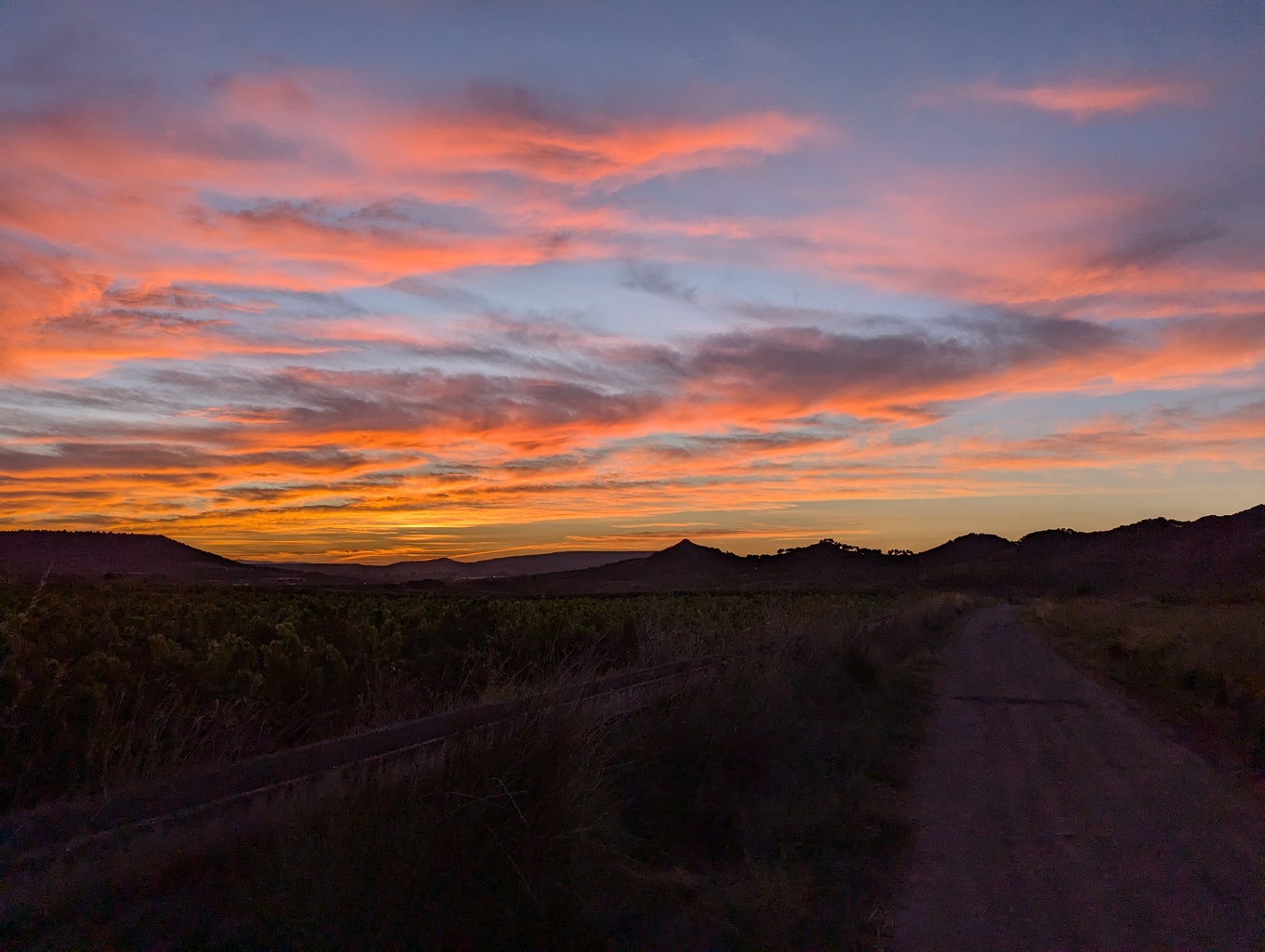
Mobile apps I used:
- Buen Camino for navigation. This was the Camino app that I most often saw other pilgrims using too. It shows your current GPS location on a satellite map of the route and also provides extremely helpful advice regarding alternate paths and challenging sections.
- Google Maps for looking up local businesses’ locations, prices, and reviews. Hours are pretty hit or miss, especially in rural villages.
- Google Translate for quickly translating restaurant menus and communicating with pilgrims who spoke neither English nor Spanish.
- WhatsApp and Booking.com for reserving hostel beds. I’d typically write something simple like “Hola, quiero hacer una reserva para el 12 de agosto”.
- Gronze for hostel prices and reviews.
- Camino Pilgrim for stage planning. Since I had already bought a return flight that afforded me 34 days of walking, I took Gronze’s 33 stages and added a new one to the mountainous stretch between Astorga and Sarria. Camino Pilgrim contains the locations and amenities of over 200 towns on the Camino, which allowed me to easily plan stages with convenient stopping points and roughly equal lengths.
- Airalo for mobile data. I paid $18 for a 10 GB eSIM that lasted 30 days. Hostels usually have free WiFi.
- Chronofile, an app that I created myself, for tracking my daily activities. I slept for 7.93 hours and walked for 5.67 hours each day on average.
- Google Keep for journaling. I found it helpful to write down the names of every pilgrim I met since I would so often run into them again sooner or later.
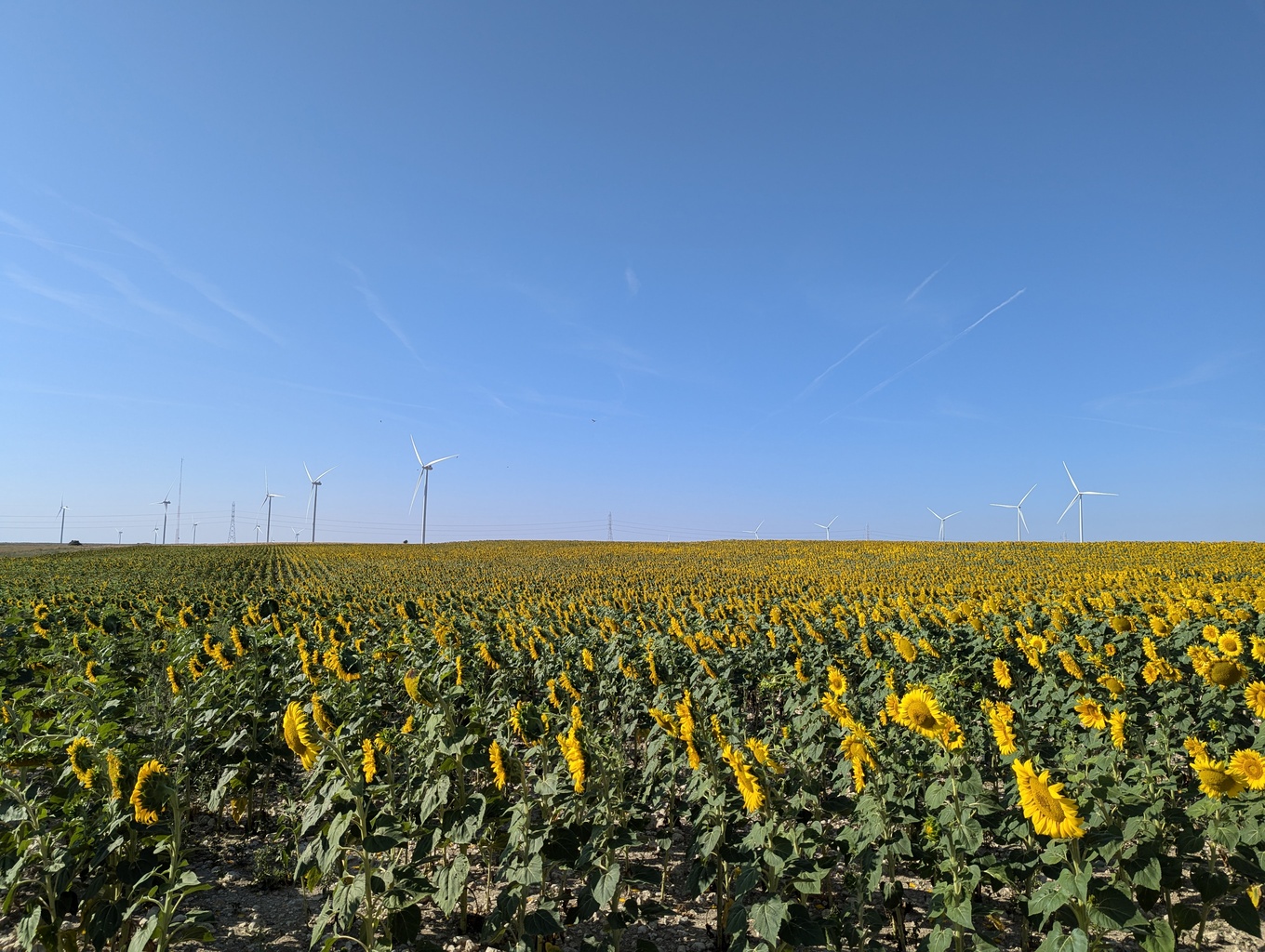
Language
Spain is less formal than Latin America. If you studied Spanish in the US, you’re probably aware that Spain has informal vosotros conjugations for second-person plural (i.e. “y’all” forms) while countries like Mexico always use formal ustedes. What surprised me more was that Spaniards rarely use formal second-person singular (usted) either, instead opting for informal tú even when addressing strangers and customers.
The lisp is real. Most Spaniards pronounce the letters c (before e or i) and z as th. For example, cerveza (beer) becomes “thervetha”. Despite my years of studying Latin American Spanish, I’m now stuck saying grathias for better or worse.
Common words and phrases on the Camino:
- vale = “OK”. I must have heard this at least once per sentence on average.
- Buen camino = “Have a good Camino”, similar to bon voyage.
- albergue = “hostel”.
- hospitalero / hospitalera = “hostel caretaker”, often volunteers.
- meseta = the flat, dry plateau that covers central Spain from Burgos to Astorga.
- aseo = “restroom”. This relatively formal word appears mostly on signage, while in spoken conversation people tend to say baño (bathroom).
- menú del día = “menu of the day”. Most restaurants offer lunch as a set menu that includes bread, water or wine, an appetizer, a main dish, and dessert. That’s what menú normally refers to, so you’ll need to ask for carta if you want to see what Americans would typically call the menu.
- Buen provecho = “Enjoy your meal”, similar to bon appétit.
- Dime = “What can I get you?” Literally “tell me”.
- vaso de agua = “glass of (tap) water”. All tap water in Spain is safe to drink and free at restaurants by law, but they’ll never give it to you unless you ask for it specifically.
- ¿Coreano? = “Are you Korean?” Most of the East Asians I met on the Camino were Korean, thanks to a famous Korean author’s 2006 memoir. Once I even saw a Korean-run hostel that served ramyeon for pilgrim dinner.

Observations
Apart from obvious markers like language and currency, many subtler aspects of Spanish culture made it clear that I wasn’t in Pennsylvania anymore:
- Restaurant beef is almost always veal, even in burgers. The most familiar beef that I ever encountered was during a post-Camino layover in Barcelona, where I had to try a Spanish McDonald’s exclusive: the McExtreme with gouda and pulled pork.
- After wheat, sunflowers are the most common crop along the Camino. Sunflowers with the misfortune of having grown near the trail would often have individual seeds plucked out by pilgrims to form smiley faces (which I found rather tasteless).
- Most hostels and hotels give you a single long, thin pillow that spans the width of the entire bed. It’s more or less impossible to stuff one of these anacondas into the flimsy disposable pillowcase that hostels provide; you need to grab one end of the tubular pillowcase and pull the pillow through it instead.
- Fanta contains real fruit juice and tastes so much better than in the US—and this is coming from someone who really doesn’t understand all the fuss over Mexican Coke. Fanta Naranja tastes like actual orange juice, not liquified candy. Fanta Limón opened my eyes to how good soda could be.
- The so-called siesta is real, although the more neutral term for small businesses’ midday break is descanso (rest). Many Spanish restaurants will open for only two hours at lunch and again at dinner. Show up ASAP to ensure that you get a table.
- The tap water in the meseta tastes like ass. No wonder restaurants won’t give it to you. Galicia and the Basque Country have much softer water.

Memories
I met the mildly famous painter Joan Bueno by chance in a tiny village of 115 people. As soon as I sat down for lunch at the table next to his, he silently started sketching me unprompted. Once he finished I wondered whether he’d try to sell me the drawing, but no—he simply told me to take a photo and then flipped through the notebook, revealing dozens more sketches of people and places from his daily life.
I asked him if he was a pilgrim. He said that he was just visiting town for his art exhibition tomorrow but that he had walked 26 times before! After two low-tech weeks of speaking mostly Spanish, it felt surreal to find this 91-year-old Barcelonan in the middle of nowhere who vigorously spoke perfect English and recited his social media URLs from memory.
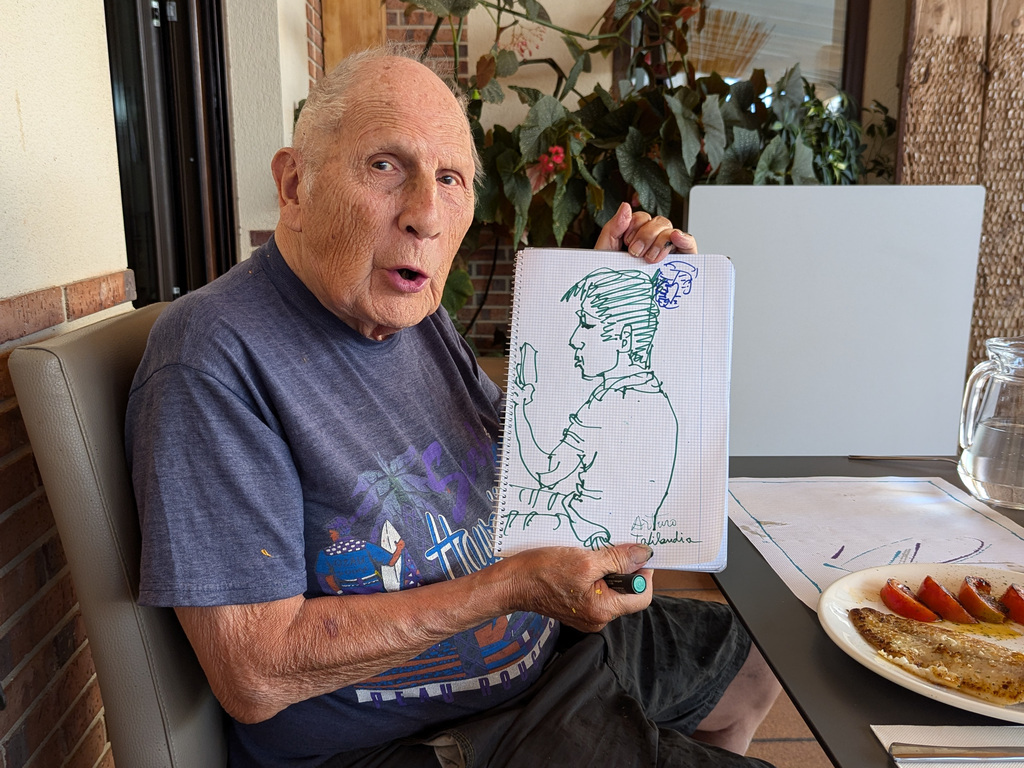
I met a pair of Mexican-American pilgrims at dinner that evening. We commiserated over our depraved methods for eating supermarket yogurt without having packed any spoons. A few days later, in an even smaller village of 66 people, I ran into them again and they invited me to try their hostel’s guitar. They warned me that it was out of tune, but of course that’s easy to fix—unlike the extremely untuned piano I had found earlier.
Unfortunately the problem was much more serious: two of the poor guitar’s six tuning knobs were completely missing! A nearby hospitalera noticed my plight and handed me some (also broken) pliers, saying that that’s how they’ve been managing to tune it.
Hours later as the other pilgrims filed off to bed, I thanked the hospitalera for waiting so long in the room with us. She replied that she wasn’t waiting for us and had just enjoyed hearing me play, saying that it reminded her of someone she knew many years ago.
When I asked her which song she had liked best, she answered that Recuerdos de la Alhambra gave her chills. Finally, I thought, I found a Spaniard in Spain who could be moved by the nostalgia of this Spanish guitar piece, arguably the most famous one in the classical repertoire, a piece I had practiced hundreds of times before… but it turned out that she had actually recognized it from the 2018 Korean drama of the same name.
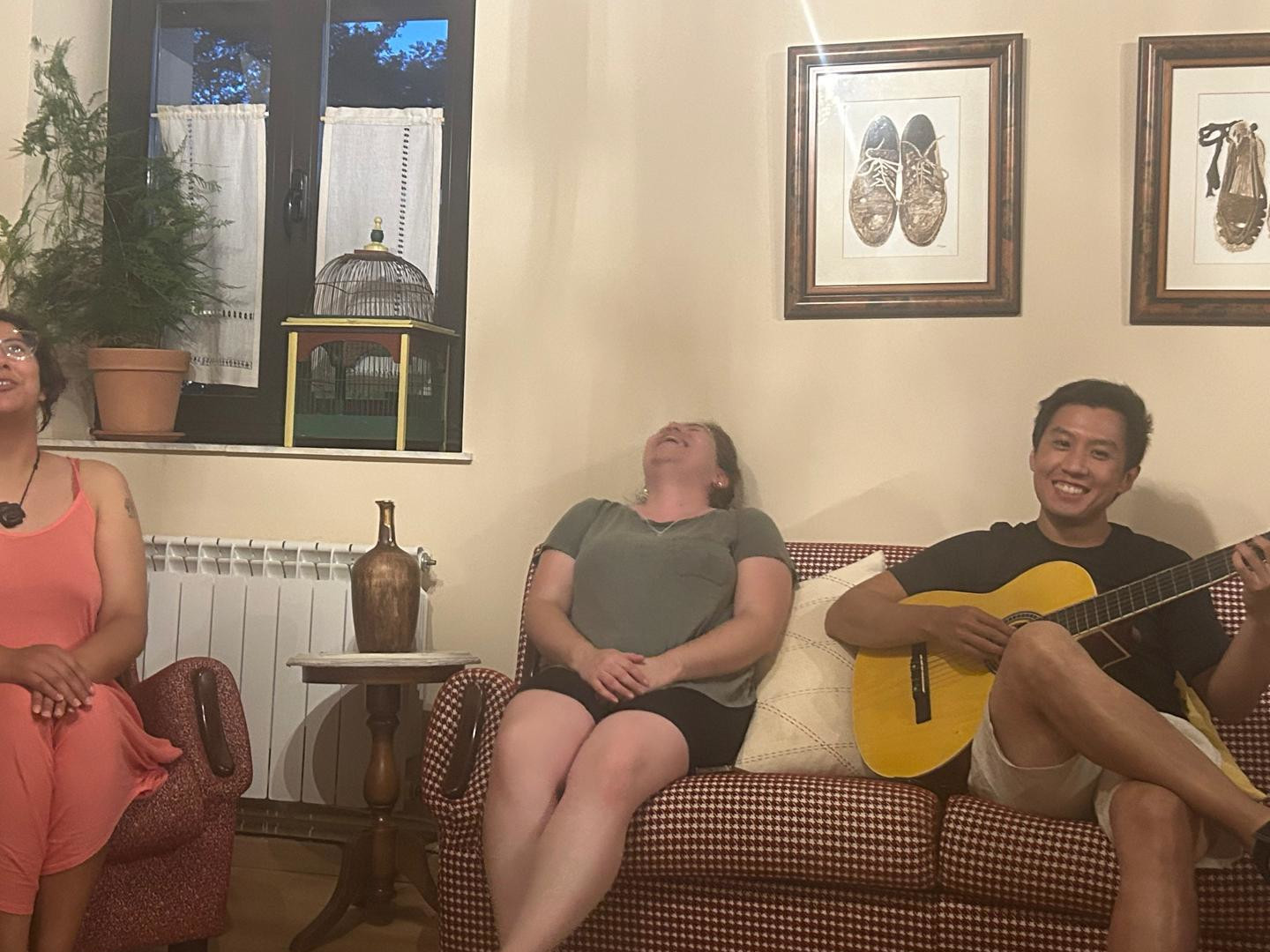
My stay in the charming town of Los Arcos gradually devolved into a comedy of errors. At noon I checked into the municipal hostel, which at €8 was among the cheapest on the Camino. Upon seeing their one small room crammed with 28 bunks and at least as many flies, I decided to cut my losses and sleep elsewhere. (A week later, another pilgrim told me she wished she had done the same.)
The new place’s receptionist helpfully showed me to their rooftop laundry area. But when I came back later to collect my clothes, the rooftop door was locked?! I thought better of going into town wearing only swim trunks and also of trying to rake the door’s lock, so I texted the receptionist and ended up waiting several hours for him to return.
By the time I escaped the building, a huge festival was already in full swing. Apparently today was the feast day of the town’s patron saint. All supermarkets and restaurants had closed for the holiday, so I and some other pilgrims wandered the reveler-flooded streets looking for vending machines. I found one and quickly bought a pack of four cheese sandwiches, failing to notice that what I had really bought was… four massive hunks of cheese. I lived off 1600 calories of cheese that day.

Wanting to pack light, I brought rubber Teva sandals to Spain as my only pair of footwear. This caused much confusion among hospitaleros who tried to show me where I could store my nonexistent hiking boots. One group of Taiwanese pilgrims was particularly horrified to learn that I had been hiking through forests and over the Pyrenees mountains in sandals. When I passed them on the trail a couple days later, they were all wearing sandals. I never got a single blister.
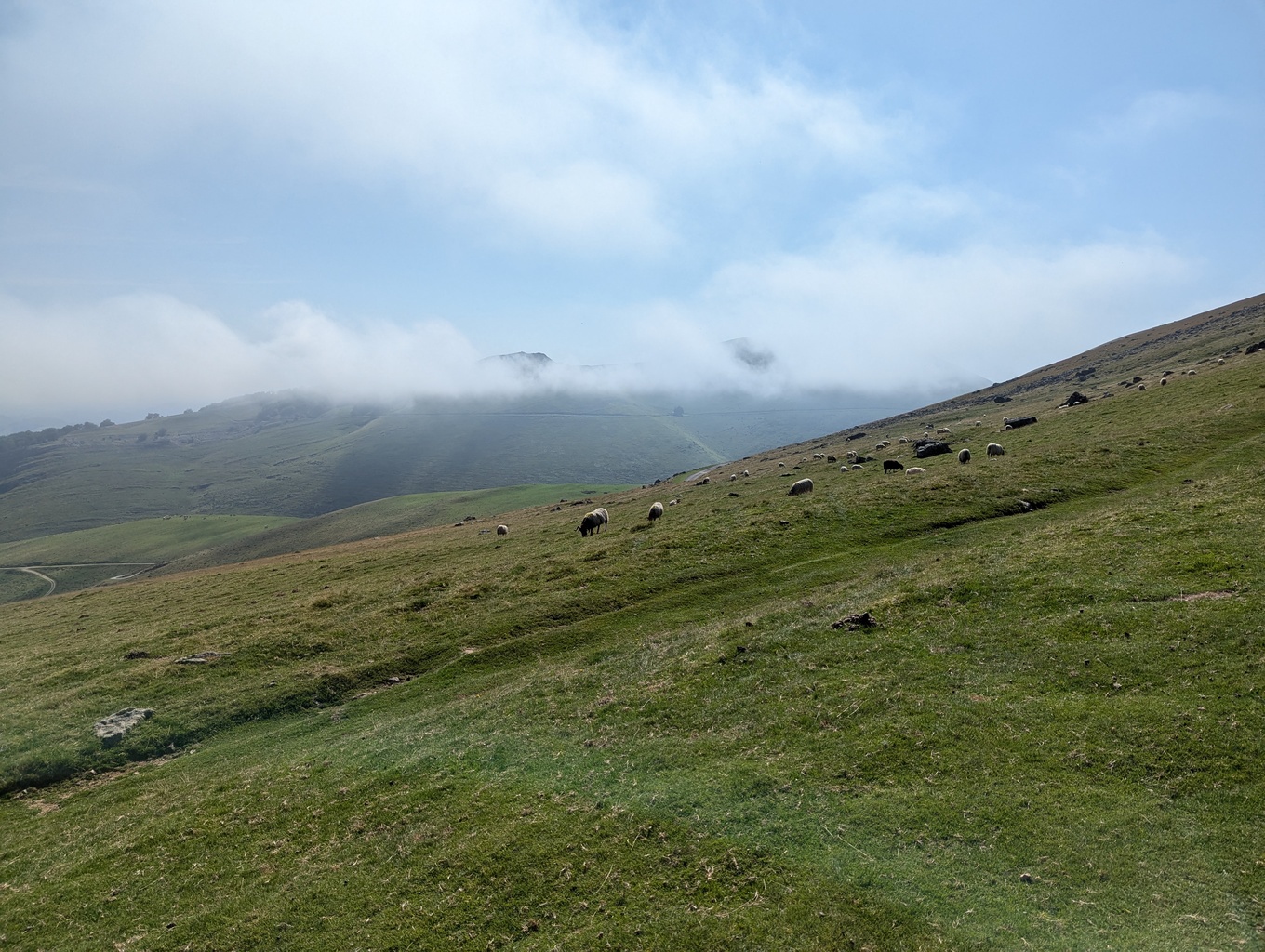
On day 34 of my Camino, I started walking the final stage to Santiago at 5am in pitch black darkness. I had read about the Pilgrim’s Reception Office receiving more than a thousand pilgrims in a single day, so I wanted to arrive as soon as the office opened at 9am. Finishing my Camino so early in the morning did, however, leave me with several hours to kill before hostel check-in at 1:30pm. I headed over to the hostel anyway to loiter in its lobby, where I found that they had a guitalele!
This specimen was in amazingly good condition, much better than the guitar I had played weeks ago. I felt right at home on my main instrument and proceeded to spend the next few hours running through every song I knew, sometimes accompanied by other pilgrims’ singing. Not long after I finally put down the guitalele, an American pilgrim showed up, collected his belongings, and left with them… including the guitalele. I was shocked that the guitalele wasn’t the hostel’s, and everyone else in the room was shocked that it wasn’t mine!
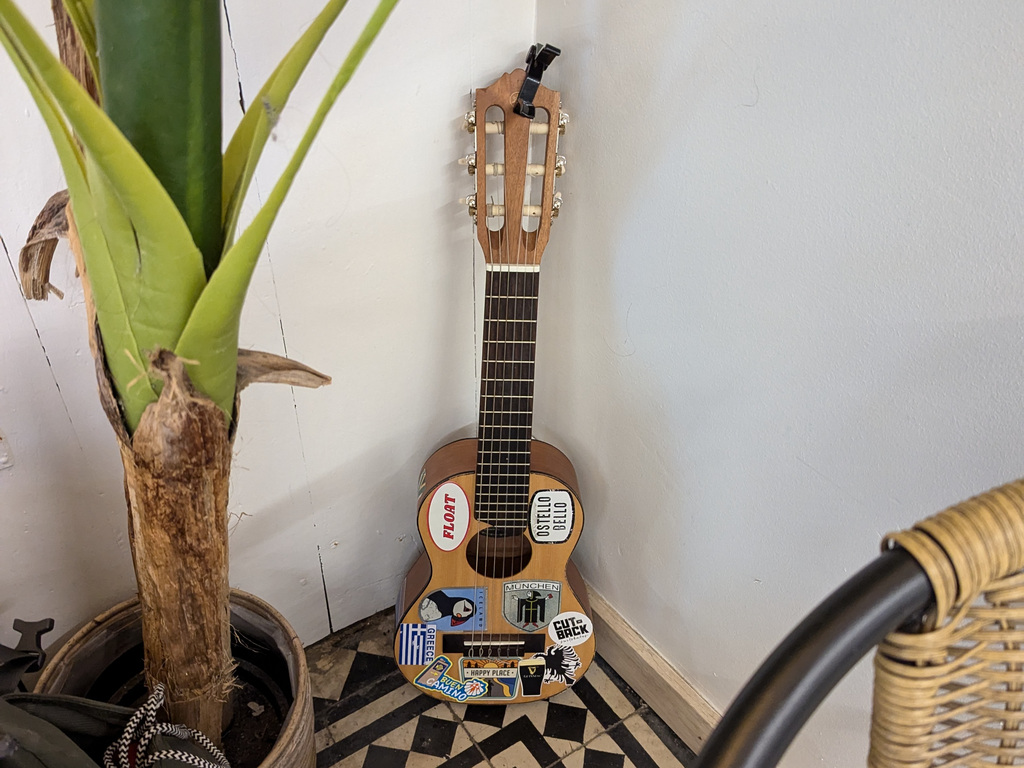
Vibes along the Camino were overwhelmingly positive, but I did encounter two notable forms of antagonism.
One was Camino snobbery: the patently absurd phrase “Jesus didn’t start in Sarria” spray-painted on so many walls5, the 71-year-old Brit who crowed about walking double-length stages last year while calling Fisterra an idiotic scam and people who shuttled their luggage cheaters, and the Czech bro who argued at length with a patient hospitalera about the ridiculousness of seeing an Asian pilgrim walk in the sun with an umbrella and hardly any exposed skin. Clearly he didn’t realize that the pilgrim in question had a photosensitive skin condition and was now sitting right next to him!
The other occasional unpleasantness was anti-Camino graffiti, e.g. “FUCK MASS TOURISM FUCK THE CAMINO” painted in huge letters across the sidewalk on the final bridge into Santiago. I’m not above calling myself a tourist, I think it’s silly to obsess over what makes a pilgrim or tourist or “traveler”, and I’m annoyed by entitlement and inconsiderateness like anyone else. But surely these urban activists must realize that dozens of towns along the Camino, including Santiago itself, exist because of the Camino? It and its commercialization were there first by a long shot.
All that said, you can’t let a handful of people reflect badly on or ruin the experience of millions. I remember the young local boy who haltingly wished me “Good walk” (a very literal English translation of buen camino), the hospitalera who invited me to home-cooked dinner with her daughter and mother since I was her only guest that day, all the highway drivers who waved and cheered as they flew by, the middle-aged Irish pilgrim who told me how his children in Vietnam were his entire world and that I looked just like one of them, and the former hospitalera who seemed to think I was lost and turned around to walk with me until we reached the edge of town.

Trivia
I now give the people what they’re really here for.
During the American Revolutionary War, the Continental Congress sent future president John Adams to ask France for financial aid. When his ship started leaking, he and his sons (including future president John Quincy Adams) narrowly avoided death by getting off early at Fisterra, the westernmost point of Spain. They then traveled the entire Camino backwards all the way to Paris!
The Milky Way points in the direction of Santiago, and ancient pilgrims used it for navigation. In Spanish, the Milky Way is accordingly known as El Camino de Santiago.
Traditionally, a Camino pilgrim would walk from their own house to Santiago and then back home again. The Camino de Santiago is thus a network of many alternate routes: the classic French Way starting in France, the Portuguese Way starting in Lisbon, the English Way starting on Spain’s northern coast, and so on. But even Camino veterans may be surprised to learn of the Antarctic Way, which begins at a Spanish research base in Antarctica, crosses the Atlantic Ocean by boat, and finally joins the Portuguese Way at Pontevedra for a grand total of 14 megameters.
Gallery
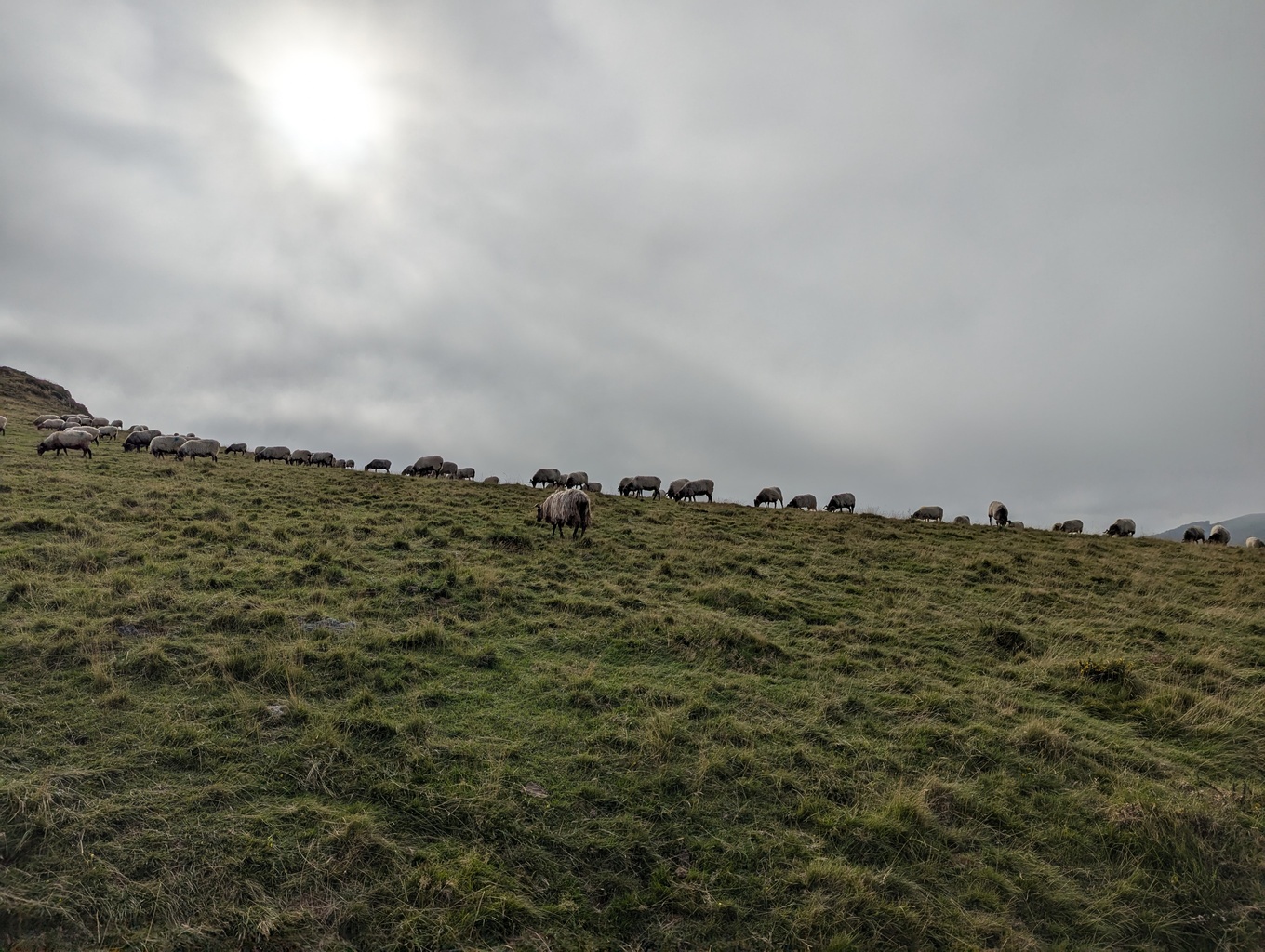 | 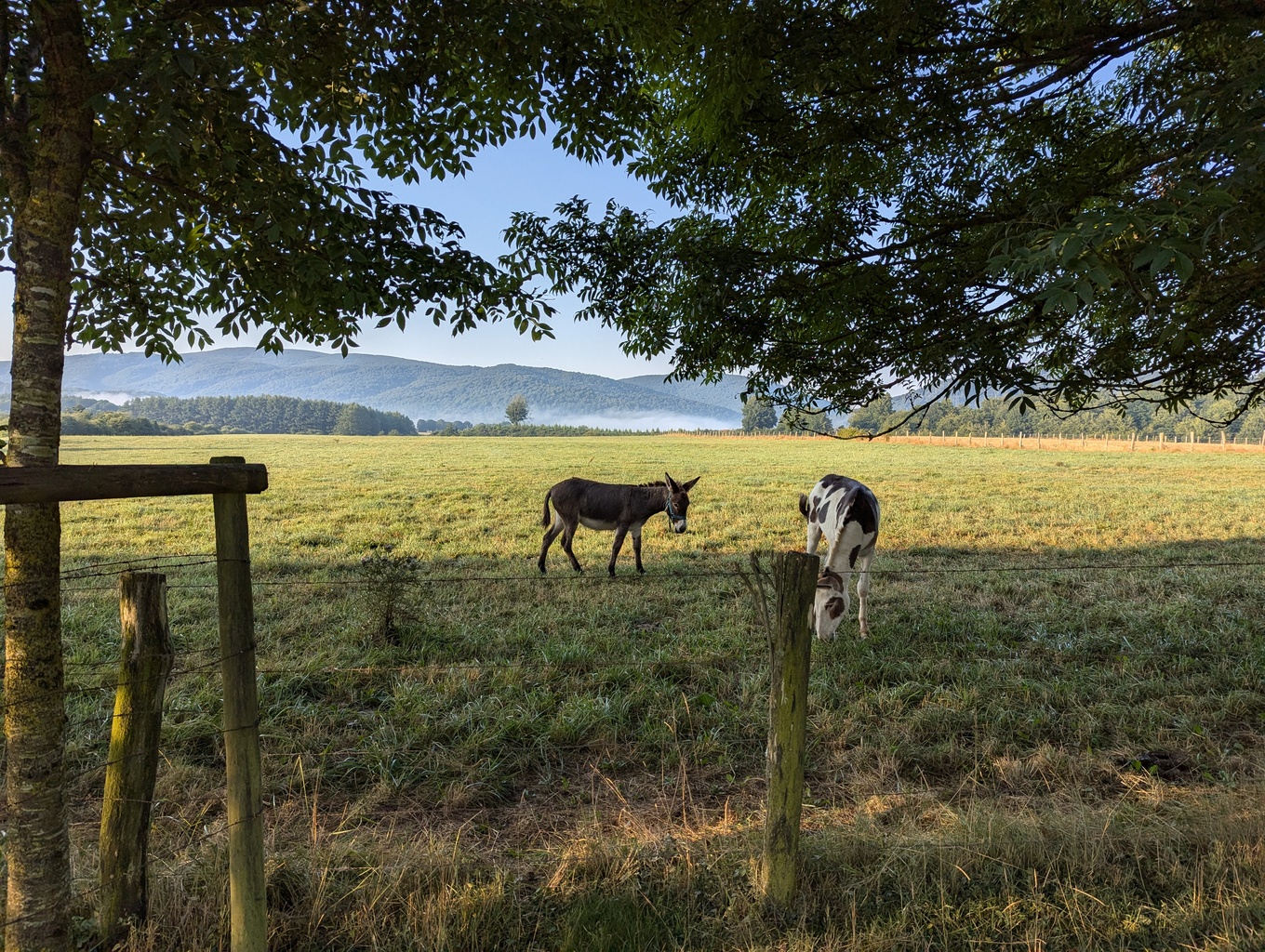 | 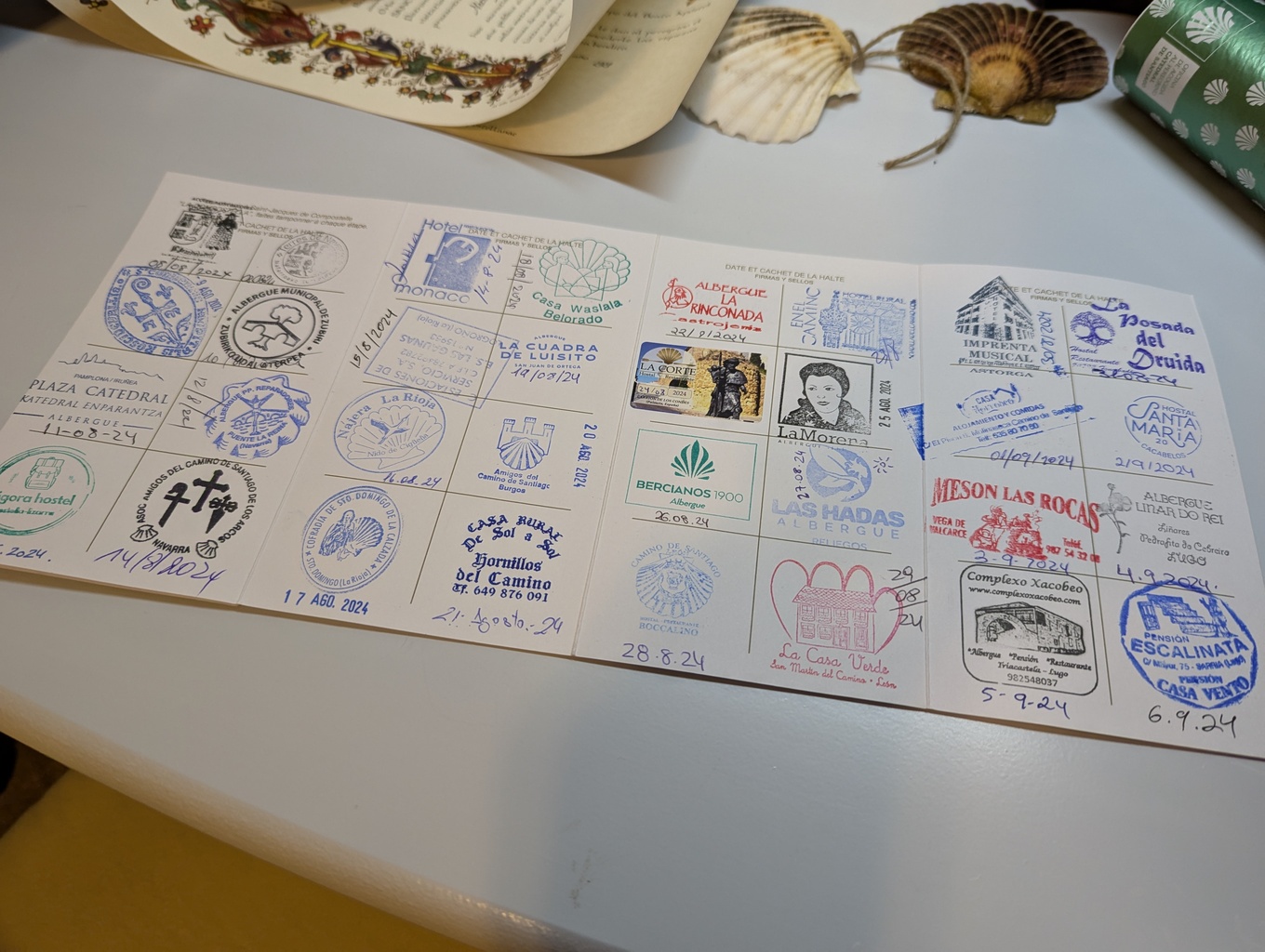 | 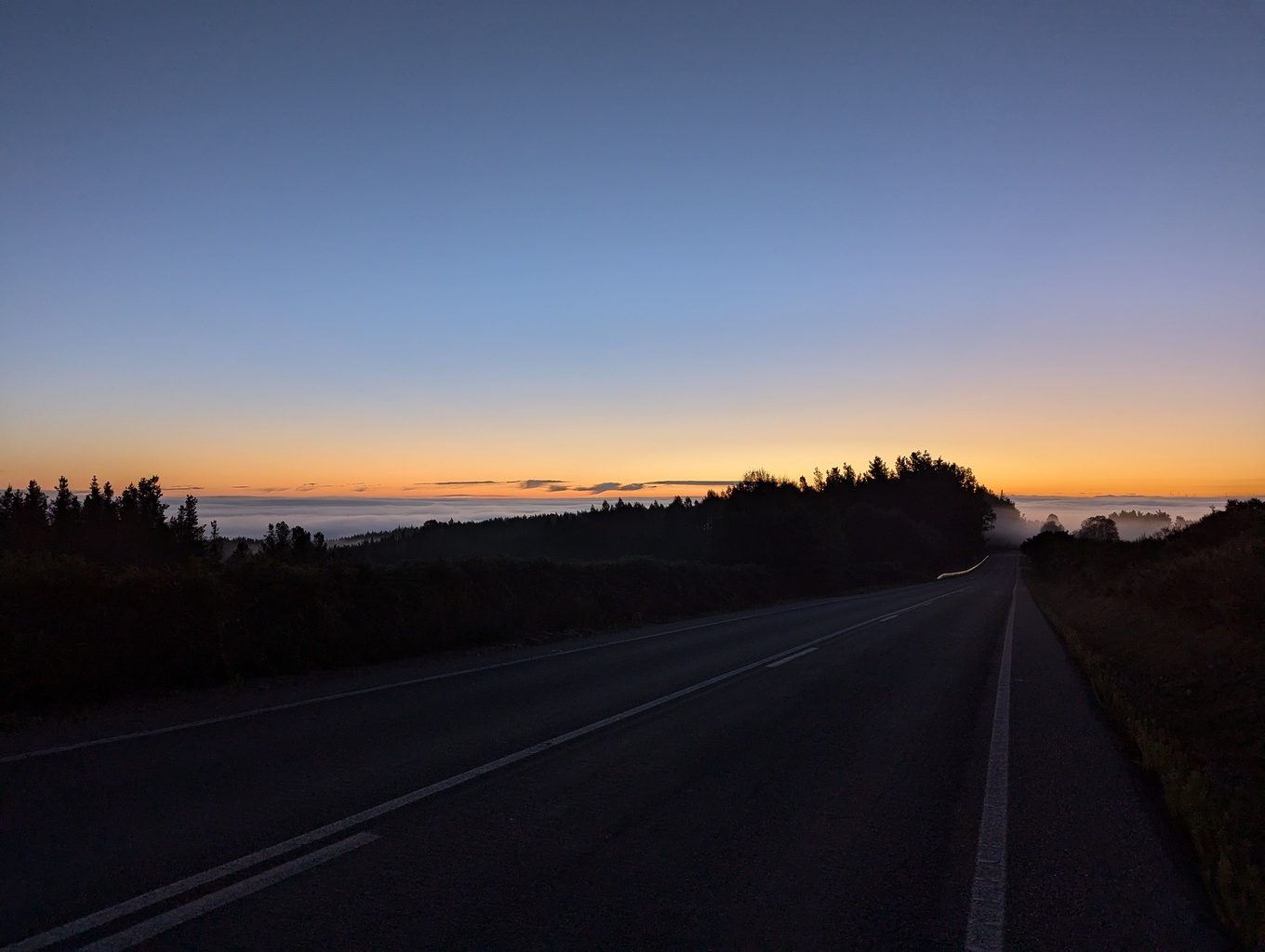 |
 | 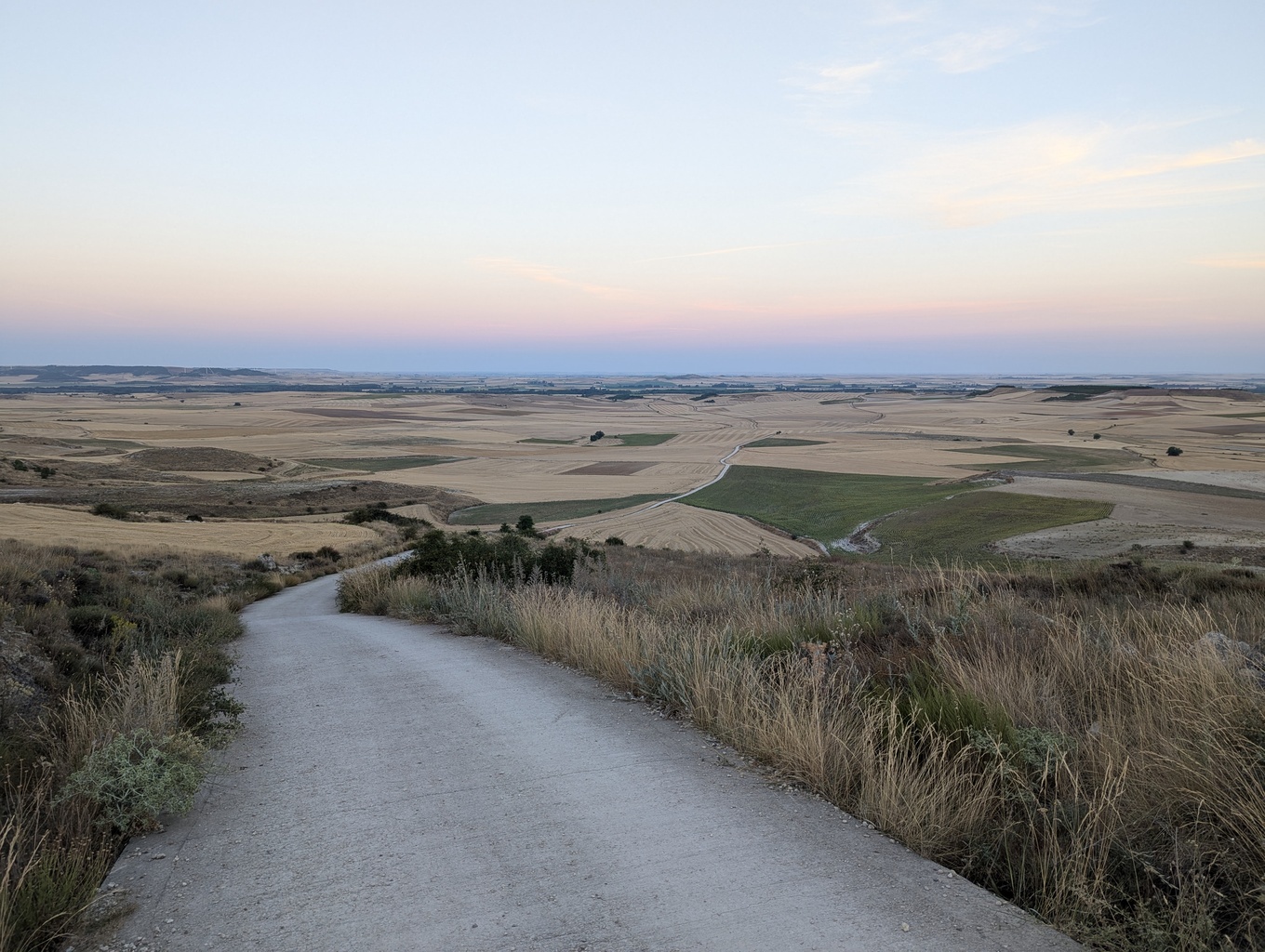 | 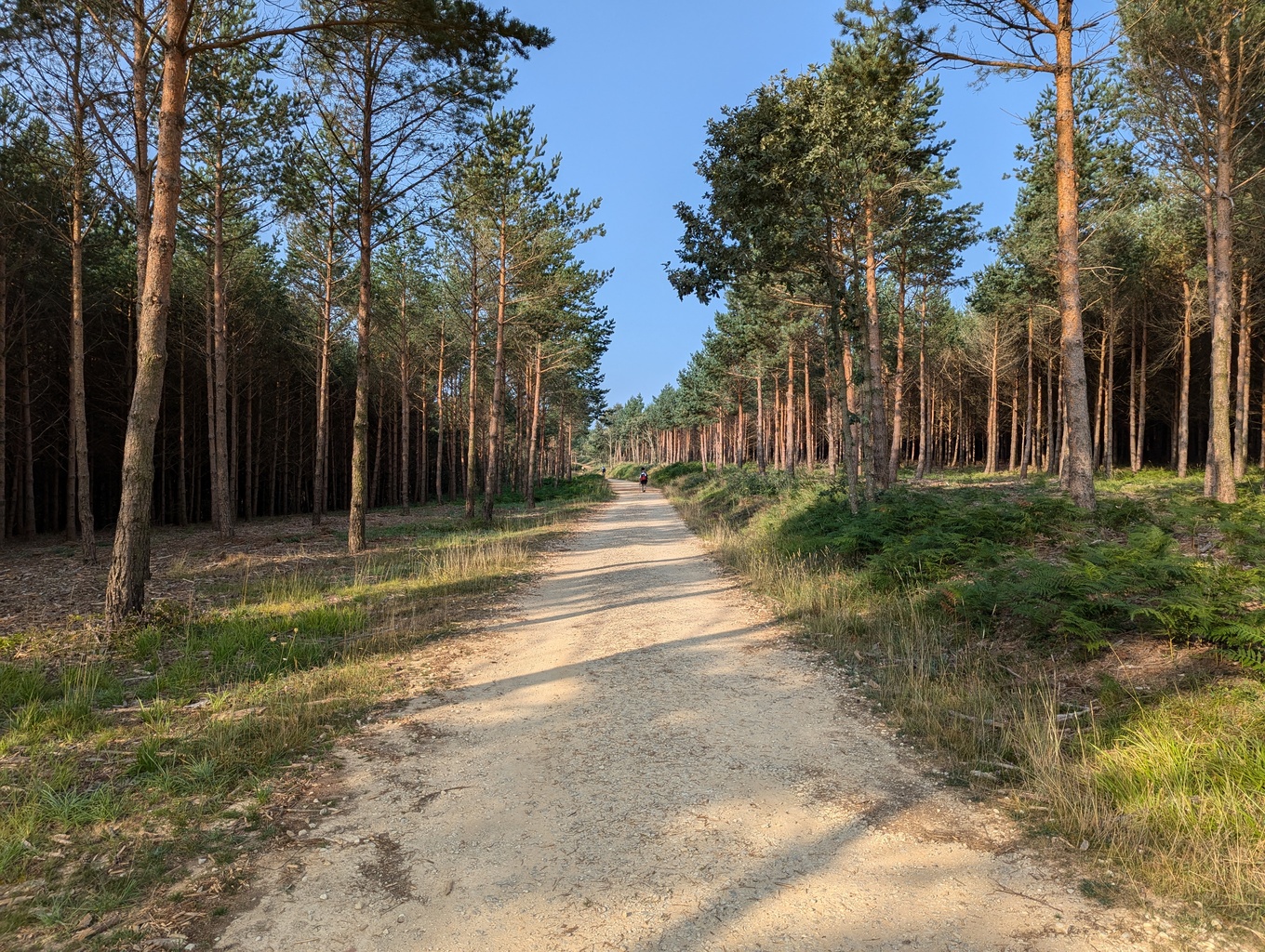 | 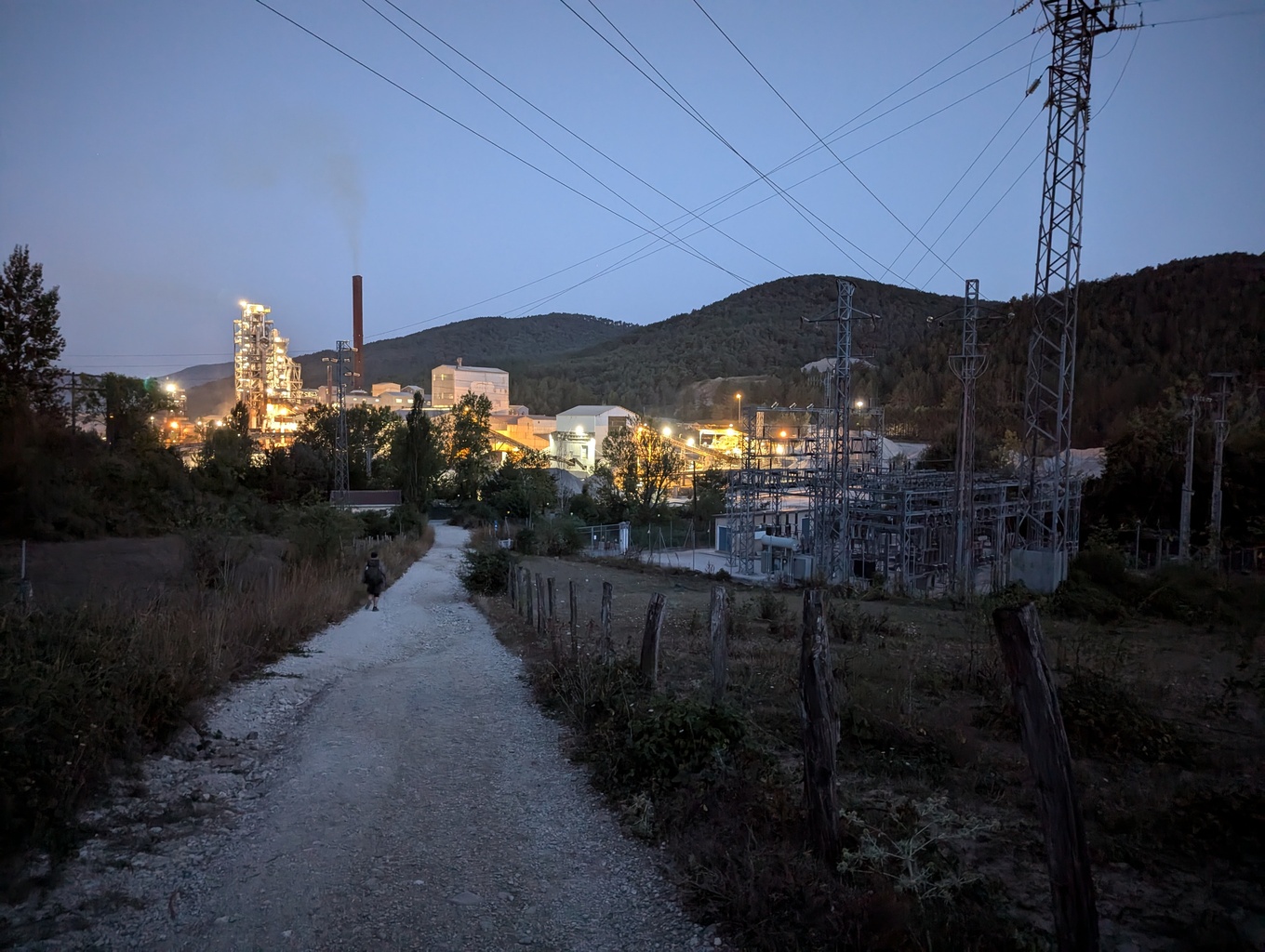 |
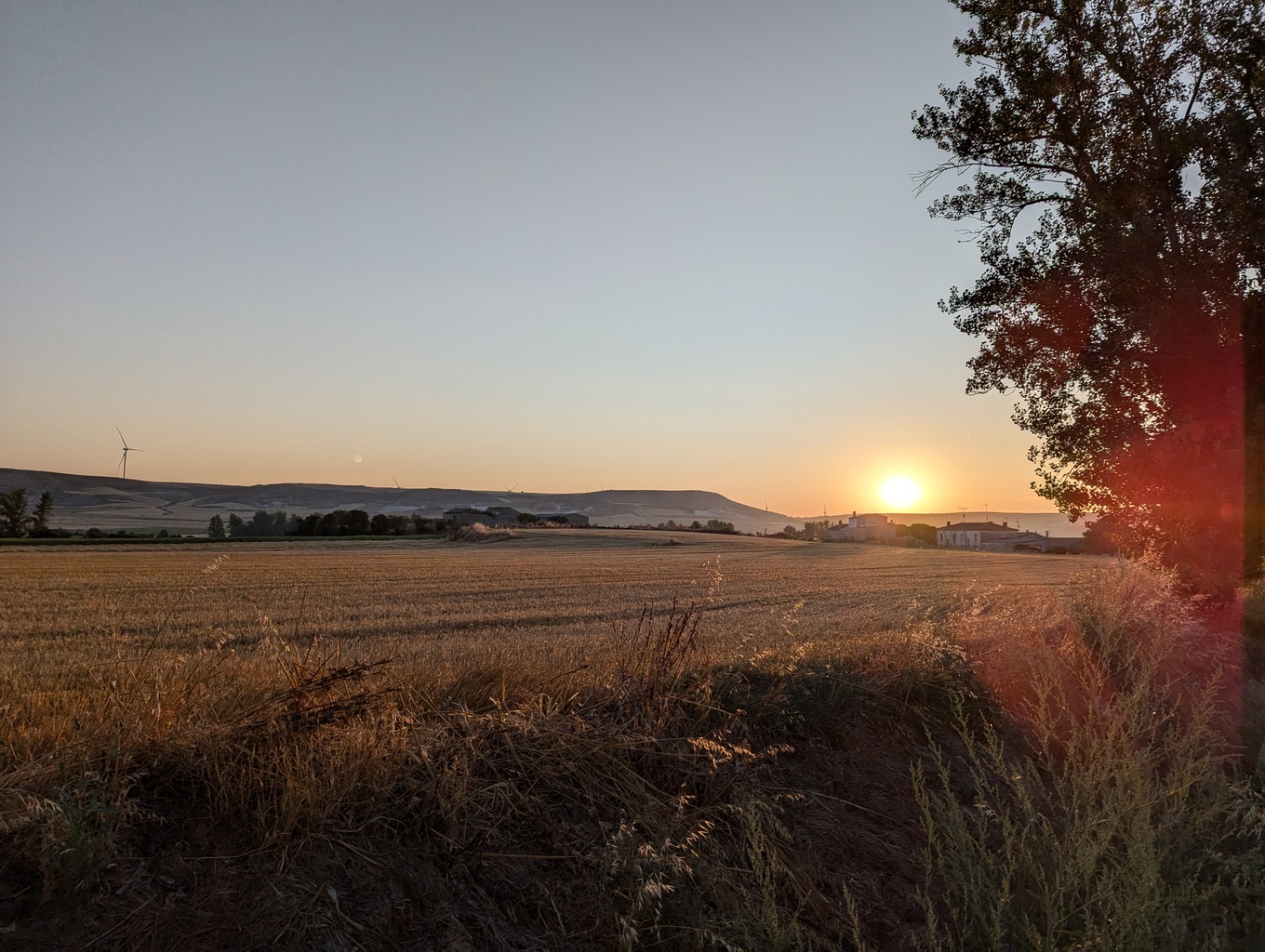 | 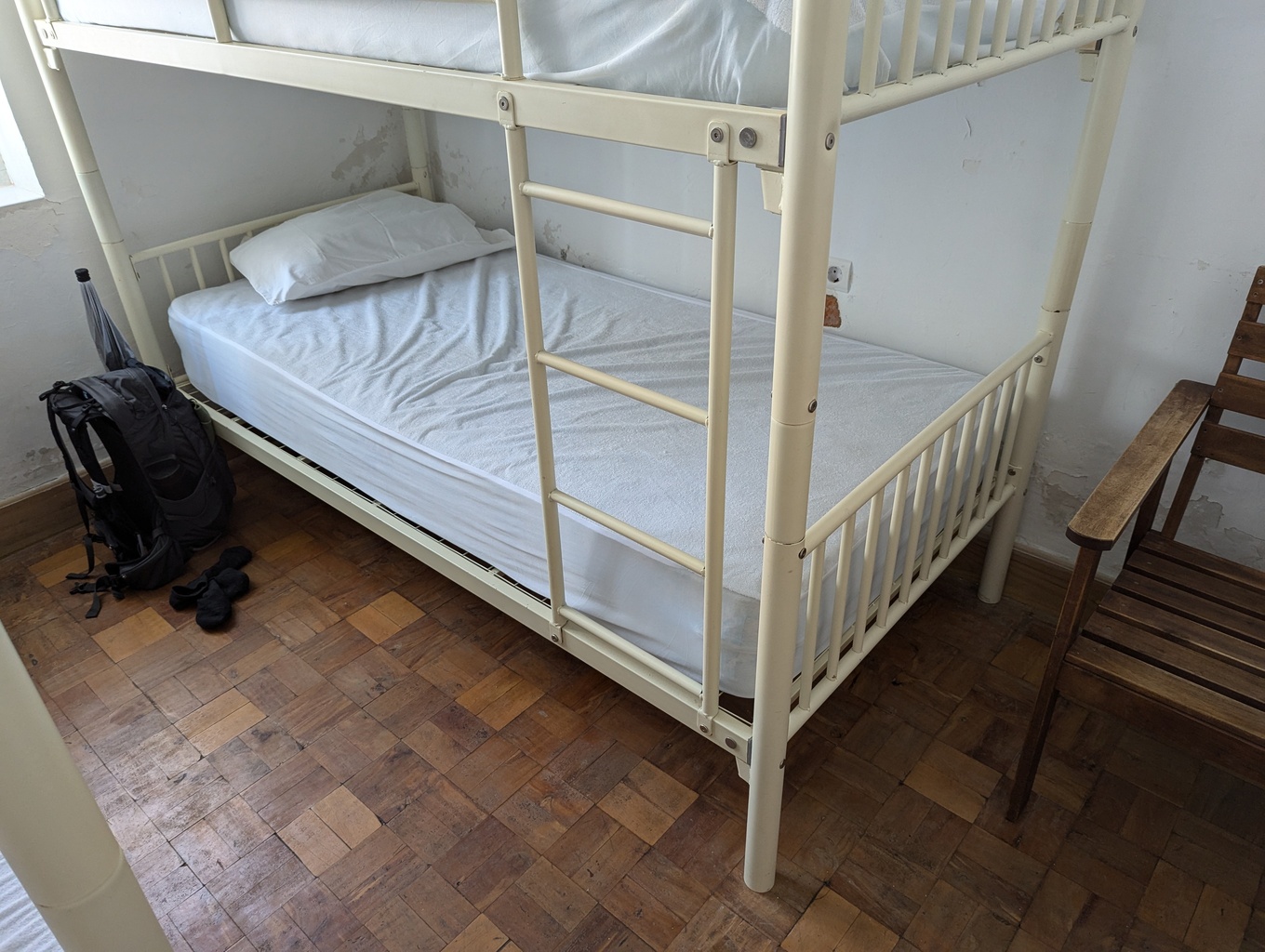 | 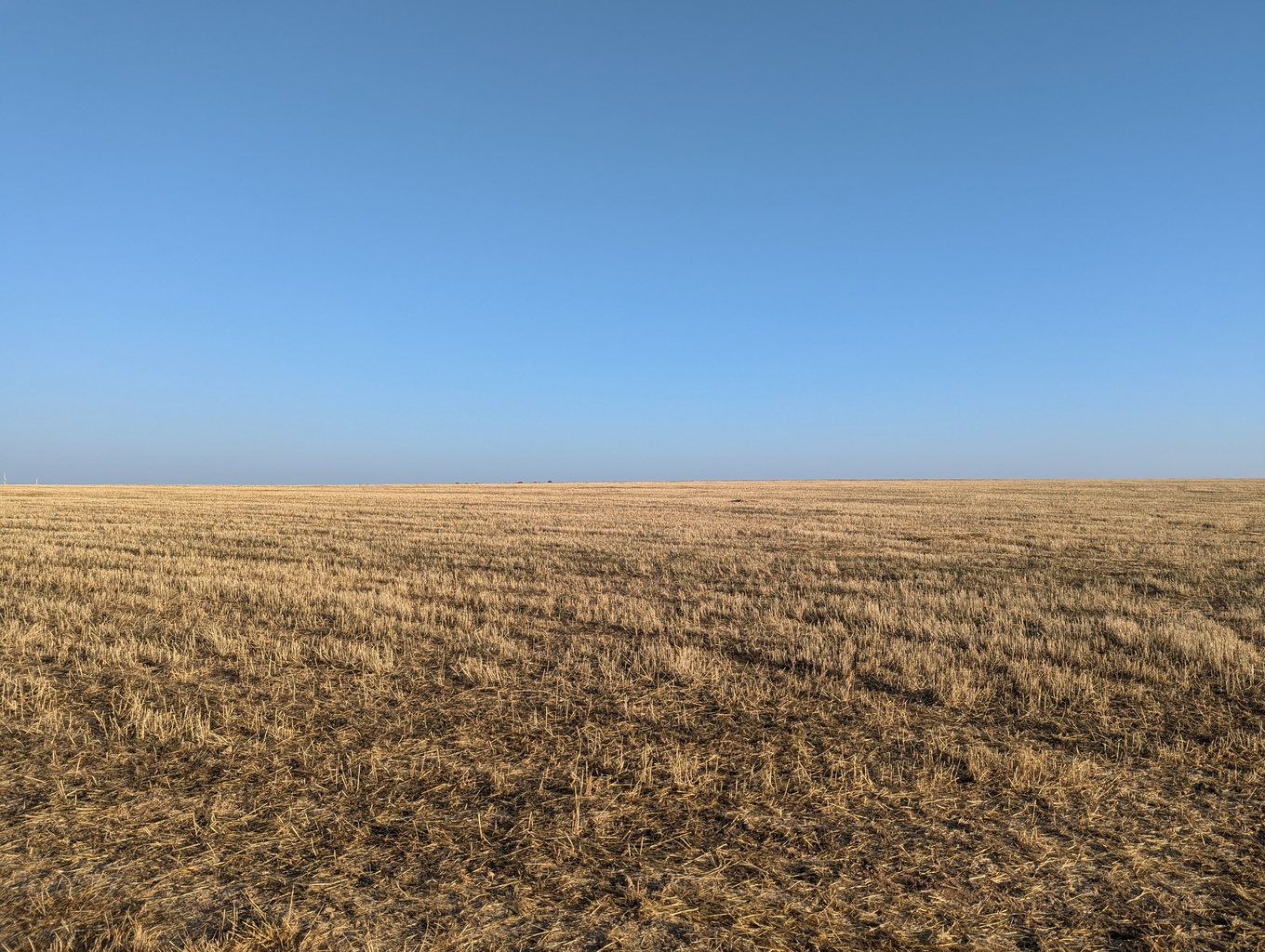 | 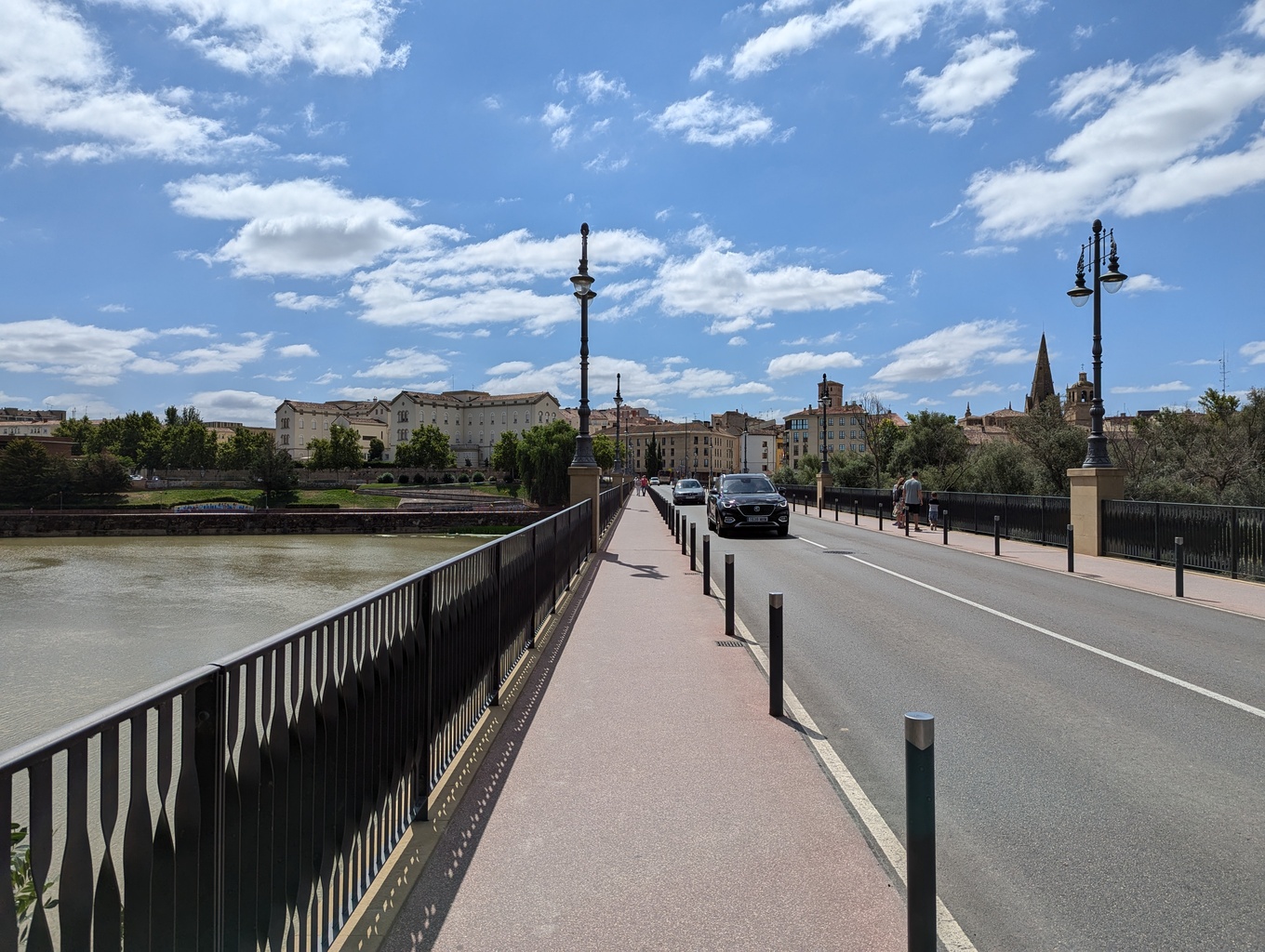 |
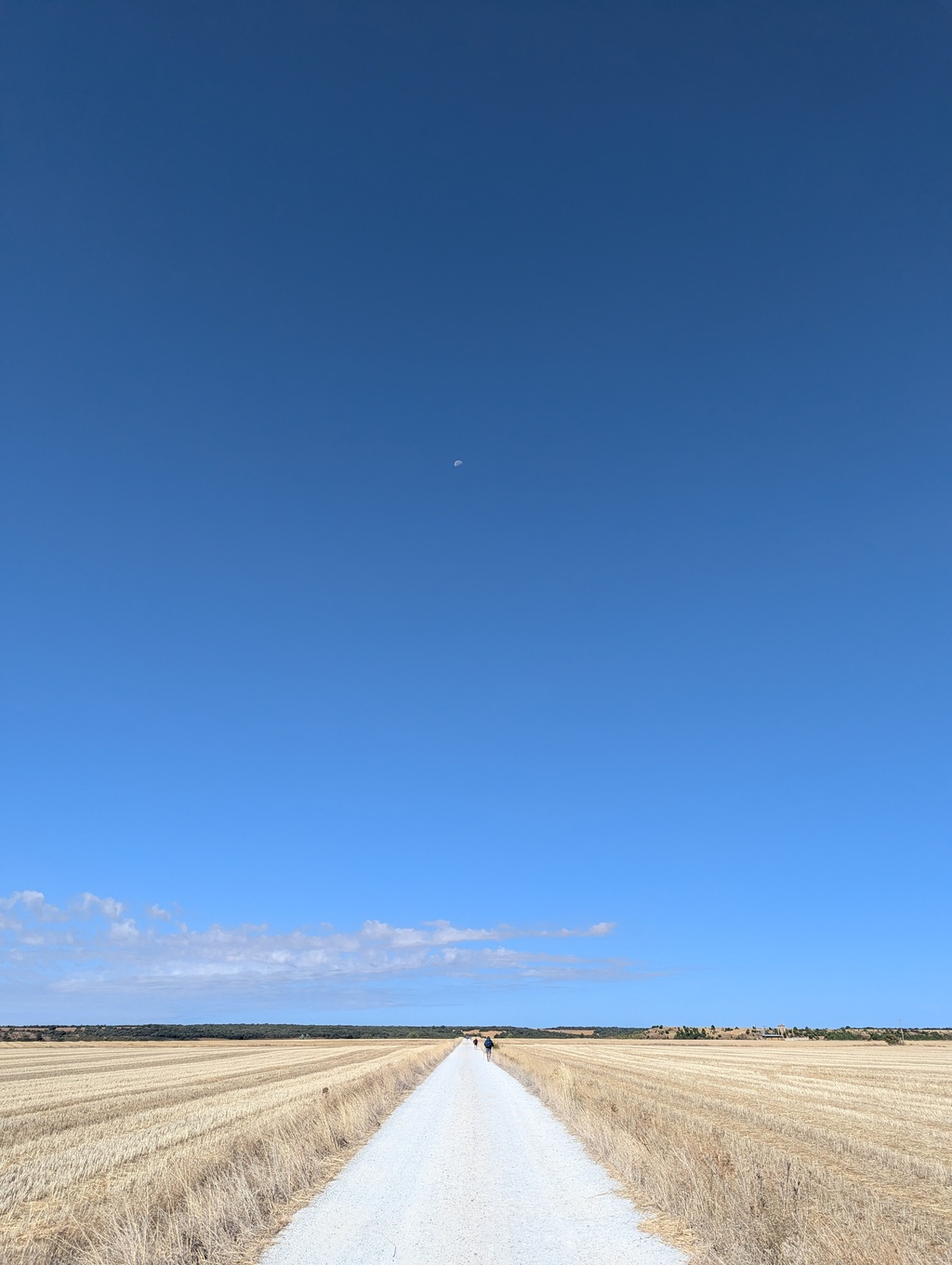 |  | 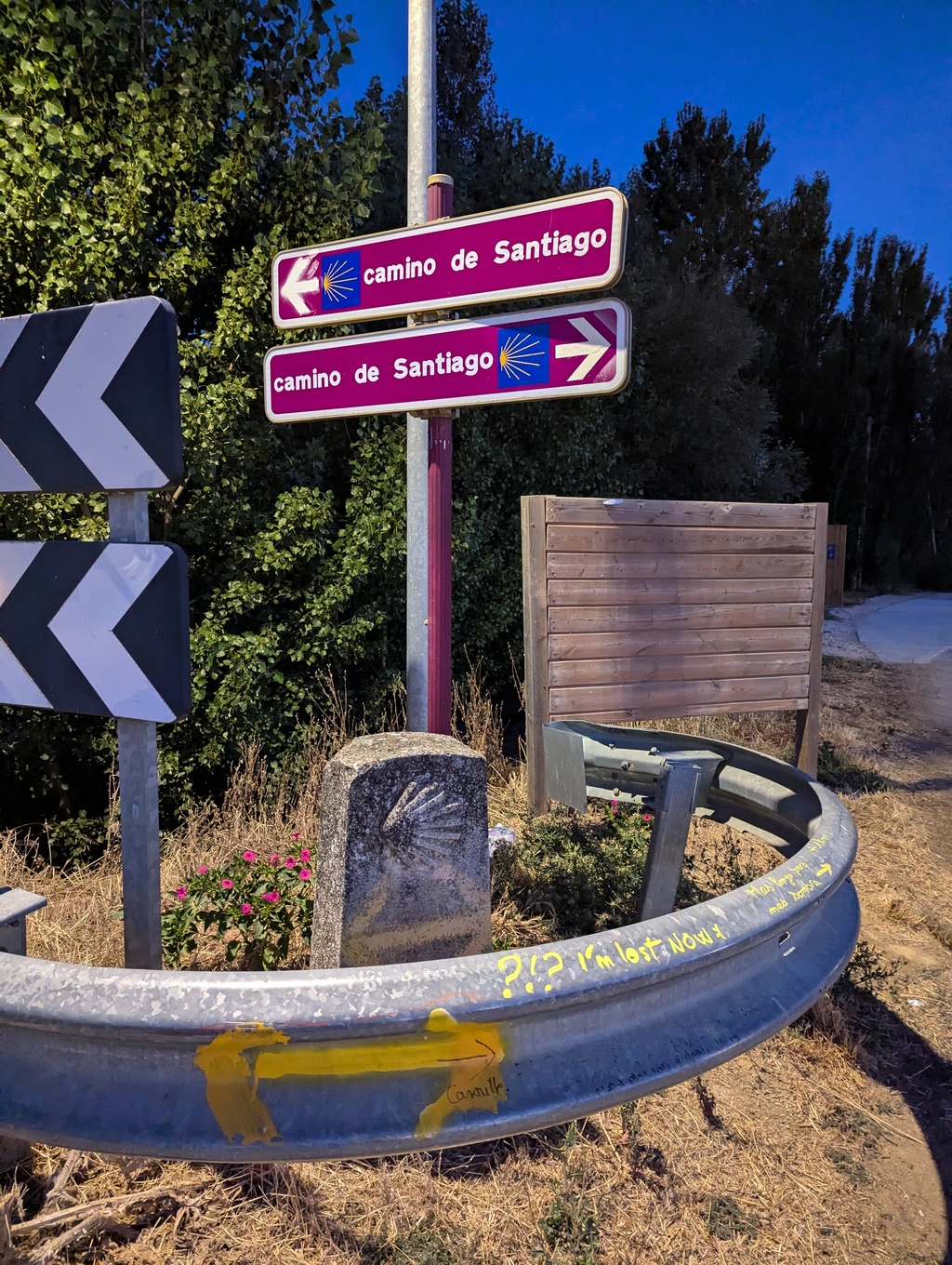 | 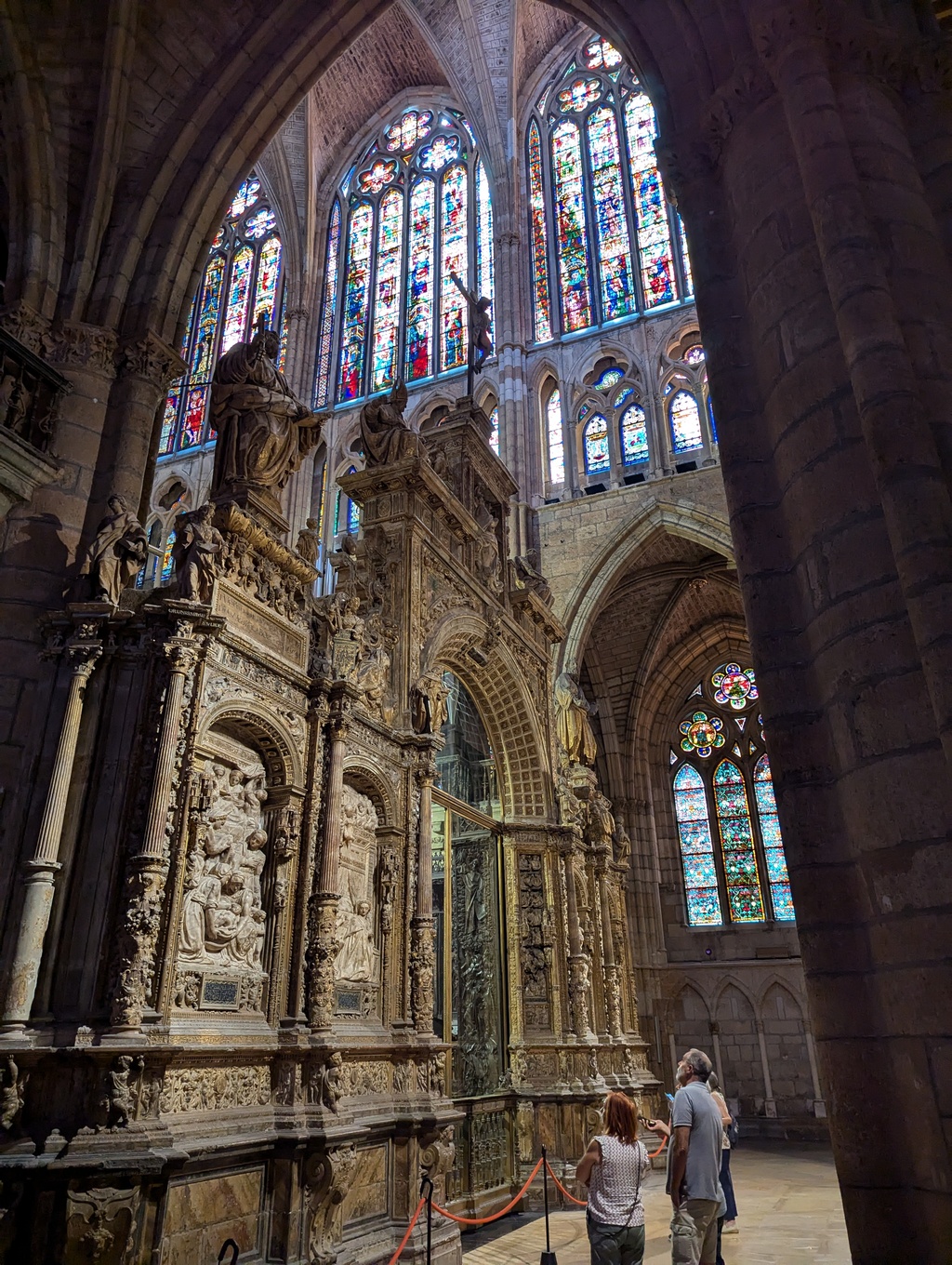 |
Further reading
- Nadine Walks and Stingy Nomads and The Lens of Jen, Camino blogs
- Days We Spend, a Camino YouTube channel
- r/CaminoDeSantiago on Reddit
- Request a Credential from American Pilgrims on the Camino
- CaminoWeather forecasts
- Hey, Thru-Hiker: Like It or Not, the Camino Has a Few Things To Teach You
My plan A was to work a summer job in Antarctica and for the past few years I’ve been applying to dozens of positions as soon as they open, but it’s getting harder and harder to land a gig there nowadays. Do let me know if you have any USAP connections! ↩
It takes some paying attention, but you can also get $101 in cash for free when signing up. ↩
…which is effectively 4am. Spain lies directly south of the UK but has been in the wrong time zone since World War II, when Francisco Franco changed the country’s time zone to match Nazi Germany’s. So when you hear about Spaniards eating dinner at 10pm, remember that it’s really more like 9pm by the sun. ↩
Source: I attended hundreds of masses across several countries as a Catholic school kid and never once took communion. ↩
Pilgrims who walk at least 100 km may receive the compostela, a completion certificate awarded since medieval times. The vast majority of modern pilgrims therefore start their trip in Sarria, a town on the French Way located just over 100 km from Santiago. While it’s true that Jesus didn’t start in Sarria, he didn’t start in St. Jean or Jerusalem or anywhere else either… ↩